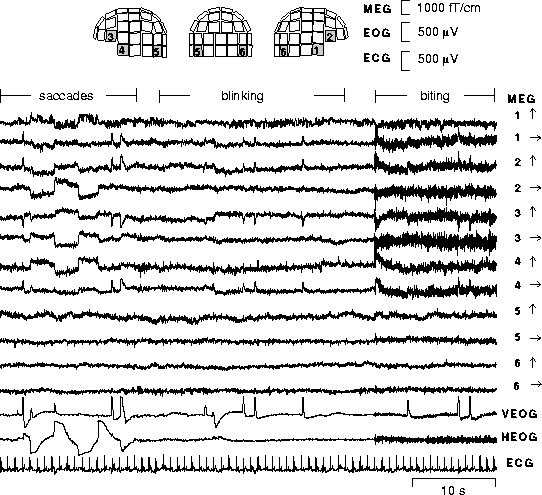 |
The MEG signals were recorded in a magnetically shielded room with a 122-channel whole-scalp Neuromag-122 neuromagnetometer. This device collects data at 61 locations over the scalp, using orthogonal double-loop pick-up coils that couple strongly to a local source just underneath, thus making the measurement ``near-sighted'' hamalainen.
One of the authors served as the subject and was seated under the
magnetometer. He kept his head immobile during the measurement. He
was asked to blink and make horizontal saccades, in
order to produce typical ocular artifacts. Moreover, to produce myographic
artifacts, the subject was asked to bite his teeth for as long as 20 seconds.
Yet another artifact was created by placing a digital watch one meter
away from the helmet into the shieded room. Finally, to produce breathing
artifacts, a piece of metal was placed next to the navel.
 |
Figure ![[*]](cross_ref_motif.gif) presents a subset of 12 spontaneous MEG signals
from the frontal, temporal and occipital areas. Due to the
dimension of the data (122 magnetic signals were recorded), it is
impractical to plot all MEG signals (the complete set is available
on the internet -- see reference list for the
adress [VigárioVigário1997a]). Also both EOG
channels and the electrocardiogram are presented.
presents a subset of 12 spontaneous MEG signals
from the frontal, temporal and occipital areas. Due to the
dimension of the data (122 magnetic signals were recorded), it is
impractical to plot all MEG signals (the complete set is available
on the internet -- see reference list for the
adress [VigárioVigário1997a]). Also both EOG
channels and the electrocardiogram are presented.